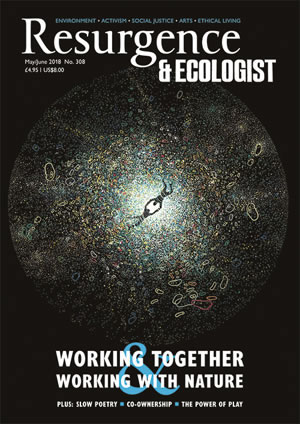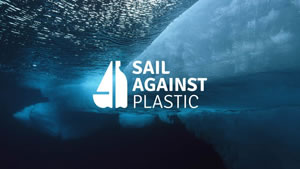On 28 June, Blue Clipper, a 33-metre three-masted tall ship, will set sail to explore Arctic territory. But this isn’t a re-enactment of Roald Amundsen’s exploits – this is a very modern expedition. These voyagers, mostly students from Exeter University, are intent on finding evidence of a new kind of landmark – one made of plastic.
The Sail Against Plastic expedition will set out from the remote Svalbard islands to the icy waters of the Barents Sea to collect evidence that the area has become a sixth major accumulation zone for marine plastic pollution. Five marine pollution zones have been confirmed so far, including the so-called Great Pacific Garbage Patch. They are formed when plastic and other debris are caught by ocean currents and trapped in the centre of gyre systems. Recent research suggests that a sixth exists in the Arctic.
As well as observational surveys, the team intend to use a manta trawl – a metal box with two wings that skims along the surface of the water – to collect samples of microplastic debris. “We’re doing surface surveys because, of the few that have been carried out in the Arctic, not many have been done on the surface of the water, particularly in the area we’re going to,” Tom Auld, a second-year zoology student at Exeter University, told Resurgence & Ecologist. “We’re still thinking that we might sample to about 50 metres by other methods. The big thing is that, because of the way the currents act around the Barents Sea, it might actually be a sink, so there are hypotheses that a lot of plastic would have drifted down to the bottom. Obviously that’s a bit hard to reach, so we’ll wait for other studies.”
Auld studies at a campus near the seaside town of Falmouth in Cornwall. He and his fellow students often organise beach cleans to deal with the constant presence of plastic pollution washed up on the shore.
As well as sailors and scientists, the 18-strong team will include photographers, artists and writers, who will help produce a variety of work, from a film to a children’s book. This is because research is just one goal of the trip, Auld explains.
“The other goal is to reach as big and as wide an audience as possible. Our feeling is that through the use of these arts we’ll create a useful and long-lasting impact rather than something that will go towards being published as scientific work that won’t really reach the public eye. So we wanted to do both.”
As well as microplastics, the team will collect evidence of other ‘unseen’ pollution – sound – to be collected using a hydrophone. The data will be used to map how marine life is being affected by human disruption, in particular commercial fishing.
“The Barents Sea is a large commercial fishery and no one has any information on how this is affecting the marine mammals. So we want to figure out the impact,” Auld says. “We don’t know yet whether we’ll do this as a live feed, constantly listening to the small sounds of mammals and boats, or whether we’ll do a few sounds each day.”
The trip has been partially crowdfunded, but even if all the costs aren’t covered this way, the team are still committed to going. “We’ve agreed we’ll pay for it ourselves if we have to,” Auld says.
The expedition isn’t just about making the team’s names as discoverers and explorers through science and art. Auld says they want to show solidarity with other communities directly affected by marine pollution, including communities in Svalbard. The team are intending to run beach cleans with schools on the islands when they return from the voyage. This is for both practical and symbolic reasons. “The problem with Svalbard is that most of the plastic pollution is not from there at all, but is washed up there,” says Auld. “I think it’s important to showcase that other countries care about the problem and that the UK stands with the locals in Svalbad in doing something about it.”
For updates on the expedition go to tinyurl.com/crowd-sail-against-plastic








